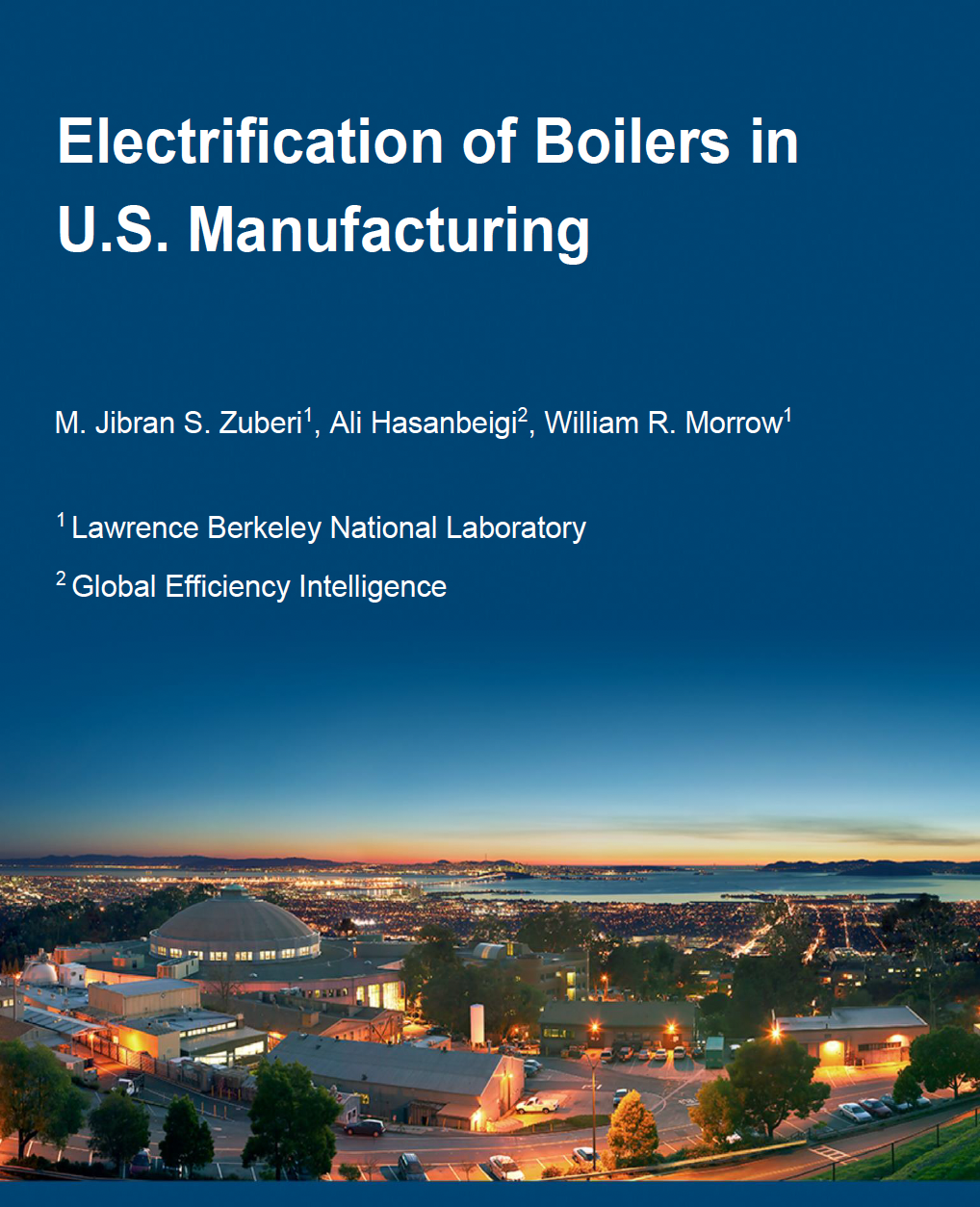Electrification of Boilers in U.S. Manufacturing
Authors: Jibran Zuberi, Ali Hasanbeigi, William Morrow
Decarbonization of the industrial heat demand through electrification where low/no-carbon electricity is used can contribute significantly to global greenhouse gas (GHG) reduction. In U.S. manufacturing, thermal processes account for approximately 75% of the total final energy demand, of which nearly 17% is consumed by conventional industrial boilers for steam generation in 2018 (this does not include boilers for combined heat and power – CHP). The share of conventional boilers energy use from total manufacturing energy use is often higher in countries with lower share of CHP.
Steam is generally used in industry to regulate temperatures and pressures in chemical processes, dry products, strip impurities from process fluids, etc. Although all kinds of energy sources can generate steam, fossil fuels’-fired boilers are dominant in the U.S. and globally. This makes industrial boilers a substantial source of GHG emissions in industry. With rapid deployment of renewable energies and decarbonization of electricity grid, it is time to seriously consider electric boilers as a key tool for deep decarbonization of industry.
Lawrence Berkeley National Laboratory and Global Efficiency Intelligence have conducted a comprehensive techno-economic analysis of electrification of industrial boilers. The study analyzes the electrification of boilers in all industrial subsectors in the U.S. and all 50 states, separately. This report presents the detailed methodology and results for energy saving, GHG emissions reduction, and costs (abatement cost curves) for industrial boilers electrification in different industries and states in the U.S. The report also discusses policy implications and action plans by different stakeholders for boiler electrification in U.S. manufacturing.
The technical potential energy savings by electrifying industrial boilers are estimated at 445 PJ per year of final energy or 21% of the U.S. industrial boiler energy demand in 2018. Moreover, if fully implemented, electric boilers can reduce the boiler onsite energy demand by 16-29% in different U.S. industrial sectors.
Boiler electrification cost curves are developed to estimate the marginal costs and the technical potential for energy savings and CO2 emissions reduction as a result of industrial boiler electrification. CO2 abatement cost curve for boiler electrification shows that industrial boiler electrification incurs additional costs in each sector and none of the industrial sectors have negative CO2 abatement costs (which would indicate cost savings). The major reason for the costs of boiler electrification to be high is the disparity between the electricity and fuel prices in the U.S. industry (e.g. the weighted average electricity price in the U.S. industry is almost 4 times higher than the average price of natural gas for the same unit of energy in 2018). Other factors including sectoral boiler efficiencies, boiler size distribution, energy mix, and fuel prices also affect the costs of boiler electrification in each industrial sector.
Since industry structure and energy infrastructure are different in each state, the state-level analysis presents more granularity. While the techno-economic trends and rankings are similar as in the national-level cost curves, the differences in costs of boiler electrification among the states are substantial. Furthermore, the electricity generation mix and the corresponding grid emission factor in a state dictate the CO2 abatement potential. Electrification of industrial boilers in several states (e.g. California, Washington, Oregon) will result in GHG emissions reduction even using 2018 electricity grid emissions factor in these states.
To read the full report and see complete results and analysis of this new study, Download the full report from the link above.

